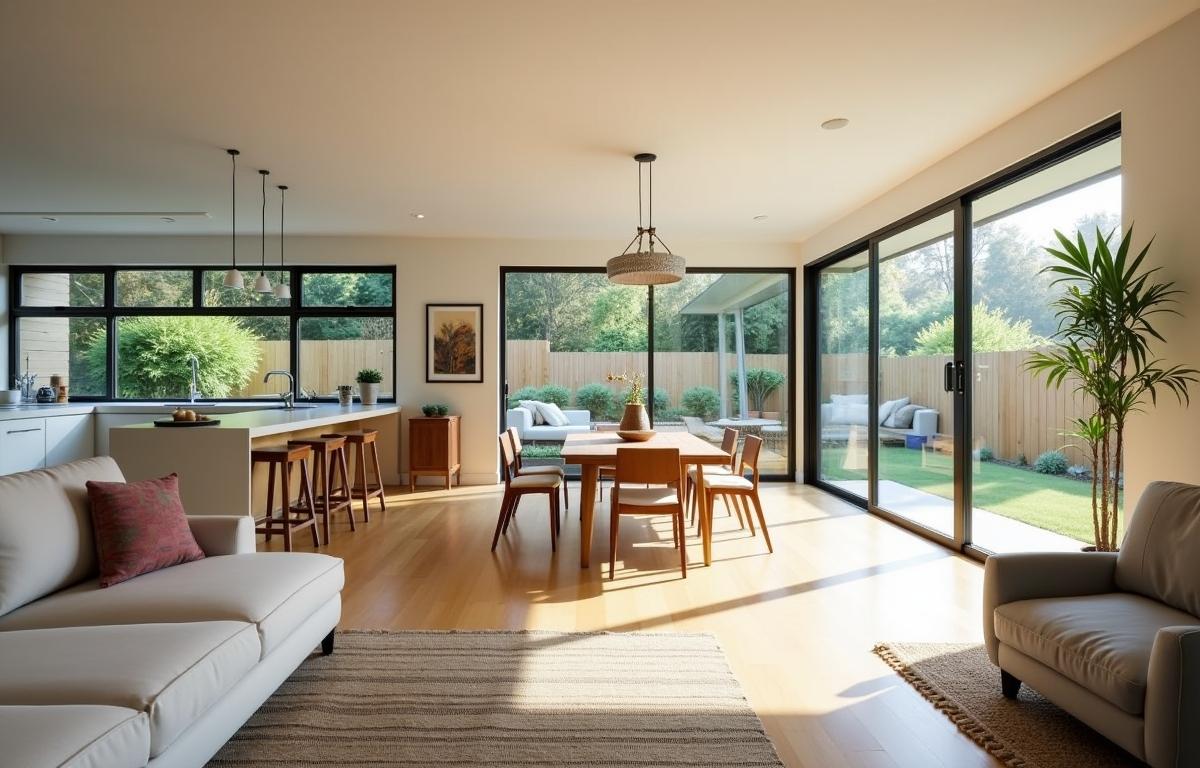
Dreaming of a cozy, functional home involves carefully choosing the right floor plan. There’s so much more to it than rearranging walls on a blueprint. Each household has unique routines, preferences, and future plans that deserve serious thought. You might be hunting for something that accommodates a growing family, or perhaps you’re seeking a tranquil retreat that fits a quieter lifestyle. The key is pinpointing the core elements that matter most to you and molding them into a layout that feels like home from the moment you walk through the door.
Evaluate your lifestyle and home design
Picture how you’ll live in each area. If you love hosting gatherings, an open kitchen that connects seamlessly to the living room might suit you best. Those who crave personal downtime may prefer cozy corners tucked away from noise. Think about how you move from one room to the next during typical mornings and evenings.
Home design also provides an opportunity to reflect your personal style. Minimalists may want streamlined rooms with fewer distractions, while large families often need flexible communal spaces. Focusing on your daily rhythm where you drink your morning coffee, how you relax after work ensures each room supports your life rather than working against it.
Size and space distribution
Square footage alone doesn’t guarantee comfort. You can have a sprawling house that feels cramped if the layout is choppy. On the flip side, a moderate home with carefully arranged rooms can feel surprisingly roomy. Instead of just scanning the numbers, ask yourself which spaces deserve the most square footage.
Storage also plays a major role, since clutter can dampen any living area. Pantries that sit off the kitchen, built-in shelving, and a sensible garage layout can help tremendously. When you designate ample storage up front, you’re less likely to trip over boxes or crowd your living room with seldom-used items. This frees you to enjoy the most important part of your home living in it.
Traffic flow considerations
Imagine rushing through the house on a busy morning. Poorly designed hallways or door placements can create daily bottlenecks. A layout that directs traffic in a smooth, circular pattern might spare you a lot of frustration. Consider if key rooms, like the bathroom or kitchen, are placed in spots that allow easy access, especially when several people are trying to use them.
Equally important is how light and air move through the home. A bright space can lift your spirits, and a well-ventilated design keeps everything fresh. Adding windows or double doors that connect living and dining areas can encourage breezes to flow through. It’s not just about aesthetics; it’s about feeling at ease with how your home breathes.
Room adjacency and accessibility
As you plan, think about which rooms need to be next to each other. Parents of young children often like having a nursery close to the main bedroom for late-night check-ins. Meanwhile, an office might be better suited to a quieter spot at the far end of the house. Grouping rooms based on who uses them and when can save you from backtracking all day long.
Accessibility also plays a role if you have older family members or anticipate anyone needing single-level access. Wider doors and straight hallways help with strollers, wheelchairs, and everyday hauling of groceries. A touch of extra foresight now can spare you big remodeling headaches later. It’s those small layout decisions that make living easier for everyone.
Keeping future growth in mind
Your immediate priorities might look different from the space you’ll need several years from now. Perhaps you plan to welcome aging parents or expect your family to grow. A flexible layout, such as including a den that can convert into a bedroom, sets you up for these transitions. You won’t have to compromise comfort or scramble for extra rooms when life changes happen.
Look at how major additions might attach to your home later. If adding a second story or expanding the garage is in the cards, a floor plan that accommodates this without drastic reconstructions is ideal. By planning for growth beforehand, you avoid feeling locked into a design that underperforms just a few years down the line.
Think about outdoor connections and new construction possibilities
Sometimes, the beauty of a home extends beyond its walls. If you enjoy spending time under the sun, look for layouts that naturally open to a patio or garden. Large sliding doors can invite breezes while merging indoor and outdoor living in a seamless way. The result is an extended living space that encourages relaxation or socializing.
When exploring new construction, you can shape the exterior environment alongside the home’s interior. Maybe you’ve always pictured a spacious lawn for summer barbecues, or you dream of planting a vibrant flower garden. By integrating these wishes into your design, you craft a property that harmonizes with your lifestyle and offers plenty of room for future ideas.
Budgeting wisely for your dream layout
Thoughtful design can influence building costs more than you might think. Intricate layouts often involve extra materials and labor, so it’s crucial to understand how each element affects your wallet. That doesn’t mean you should abandon every creative flourish, but you do want to be sure you aren’t stretching yourself too thin financially.
Decide which aspects you value most. An elaborate kitchen island might be worth the investment if you love preparing meals and entertaining. However, a rarely used formal dining room might be the place to simplify. By channeling your budget toward the features you cherish, you create a balanced plan that looks and feels right without inflating expenses.
Talk to professionals and gather opinions
Architects and builders are invaluable allies, especially if you’re feeling overwhelmed. They can spot structural challenges or highlight opportunities for natural light you never noticed on paper. Touring model homes is another useful strategy. It gives you a tangible sense of how various layouts function and what might fit your family’s lifestyle.
Friends and family often have stories to share, too. They might mention that having a laundry room upstairs reduced countless trips, or that a smaller bathroom created more space for a roomy closet. These lived experiences can guide you in refining your own blueprint. Still, weigh every opinion against your personal preferences, because what works for others might not suit you at all.
Making the perfect floor plan work for you
As you refine each detail, remember that even small shifts can deliver big rewards. A snug reading nook by a sunny window or a touch more space in the entryway might make your mornings smoother. These tiny adjustments help shape the perfect floor plan around your preferences and daily reality. Don’t hesitate to test ideas that resonate with your vision of home.
Feel free to combine insights from different designs, open houses, and sample layouts. Each visit or conversation can spark an improvement in how your rooms interconnect. By staying true to the features that matter most, you’ll fine-tune your layout over time. Ultimately, your home should reflect who you are, supporting your routines while inviting you to savor every square inch.



